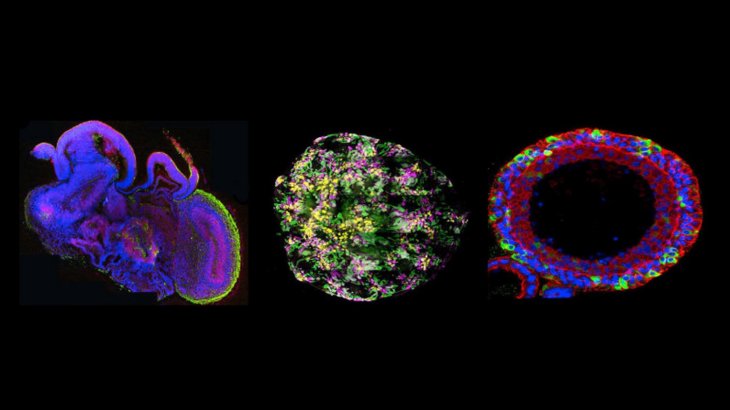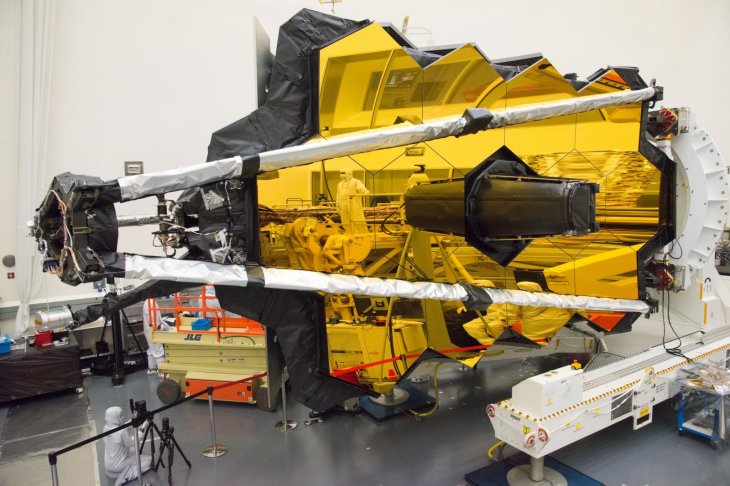Major Scientific Breakthroughs That May Transform Our World In The 2020s
Aadhya Khatri - Jan 29, 2020

Here are our projections of what might show up in the 2020s and change our lives for the better
- The Earth Is At Its Hottest It Has Ever Been In At Least 12,000 Years
- This 10Km Tall Ice Cube all Shows How Much Ice We Lose Every Year
- This Exoplanet Is So Hot That Rock Evaporates And Rains Into Magma Ocean
The last ten years have seen some revolutionary discoveries being made. And at this rate, brace yourself for another stream of breakthroughs to come. So here are our projections of what might show up in the 2020s and change our lives for the better.
A Universal Flu Vaccine
Scientists have been working for decades to make a universal flu shot and the next ten years might see that ambition materializes. Several approaches toward the goal have shown positive results, giving us hope that we will soon see such a shot makes it to reality.
What scientists aim at is a universal vaccine that can eliminate the need to get a shot annually.
Flu viruses have some of their parts constantly change while others remain the same for a long time, so obviously, a universal shot should target the parts that are unchanged.
Last year has seen the first human trial of a universal flu vaccine. The goal here is to develop immunization for the hemagglutinin stem, the less variable part of the virus. This trial is expected to yield results of the safety of the vaccine as well as human responses to it.

Another vaccine that has the potential to be the universal one we are hoping to get is developed by BiondVax, an Israel-based company. This one is currently at Phase 3 which tests its effectiveness.
More Effective Mini Brains

Scientists have successfully grown artificial brains called organoids from the stem cells of humans. For now, we are only able to build small pieces of the brain but that may soon change.
Scientists hope that they could model the architecture of the brain, not just its diversity. If that comes true, we may have a way to deal with neurodevelopment disorders, and see how different people’s brains react to pharmacological treatments.
In the future, we might even able to grow replacement for damaged parts of the brain.
A New Energy System

Natural disasters and rising sea levels are reminding us of what we have done to our planet, but what the 2020s hold for our future?
Many believe that breakthroughs will be made in the next ten years to deal with the pressing issues climate change has caused. However, we need proper policies and politicians who support them.
The next decade will see a transition from fossil fuels, which are responsible for the exhausted fumes that are choking us to renewable and more environmentally friendly energy.
These disasters have attracted people’s attention and we are more serious than we have ever been in dealing with climate change.
Finding The Axion
One of the biggest findings of the last decade was the discovery of the Higgs boson, which is responsible for lending other particles their mass.
With Higgs being found, other, less well-known particles started to be noticed. So scientists hope to finally find the axion, a now hypothetical particle. Axions could help scietists understand why physical laws apply on both the matter and their antimatter partners, even with the flipped spatial coordinates.
Anxions are, for now, the leading particles with the most potential for dark matter, the one that holds our galaxy together.

The finding of the axions would be a giant achievement for physics and it might happen by observing the background of the cosmic axion. The 2020s might see that happens as interest in this matter is increasing around the globe.
The highlights here are the CERN Axion Solar Telescope and the Axion Dark Matter Experiment which are hunting for these particles.
Exoplanets: An Earth-Like atmosphere
Back in 1955, a finding changed our whole concept of our world and our place in the universe. Two astronomers found the first exoplanet that orbits a star like our Sun. The 51 Pegasi b orbits around the star in 4.2 Earth days and its mass is about half of that of Jupiter.

A decade later of that first breakthrough finding, we have found more than 4,104 planets that behave in the same way. That is a big number for just ten years.
With the James Webb Space Telescope launched, we have reason to believe that the 2020s will be a big decade for exoplanets and astronomy in general. As the successor of the Hubble Space Telescope, the James Webb Space Telescope is scheduled to be launched in 2021. This means astronomers will be able to see the exoplanets that orbit further from their stars.
The telescope will also offer us a look at the detailed characteristics of these worlds. We can even identify water vapor, a sure indication of liquid water oceans. And since water is vital for life, a planet having it is a big deal for us as it may suggest the support of life.

The ultimate goal here is to find a planet that has an atmosphere similar to that of the Earth, in other words, an Earth-like exoplanet.
There is a challenge though. The telescope will call for the need for collaboration of individuals to form small groups in the 2020s. The number is small by other standards but the endeavor is still challenging anyway.
An example is the Laser Interferometer Gravitational-Wave Observatory, the latest effort with the involvement of more than 1,000 scientists from all over the world.
Featured Stories

Features - Jul 01, 2025
What Are The Fastest Passenger Vehicles Ever Created?

Features - Jun 25, 2025
Japan Hydrogen Breakthrough: Scientists Crack the Clean Energy Code with...

ICT News - Jun 25, 2025
AI Intimidation Tactics: CEOs Turn Flawed Technology Into Employee Fear Machine

Review - Jun 25, 2025
Windows 11 Problems: Is Microsoft's "Best" OS Actually Getting Worse?

Features - Jun 22, 2025
Telegram Founder Pavel Durov Plans to Split $14 Billion Fortune Among 106 Children

ICT News - Jun 22, 2025
Neuralink Telepathy Chip Enables Quadriplegic Rob Greiner to Control Games with...

Features - Jun 21, 2025
This Over $100 Bottle Has Nothing But Fresh Air Inside

Features - Jun 18, 2025
Best Mobile VPN Apps for Gaming 2025: Complete Guide

Features - Jun 18, 2025
A Math Formula Tells Us How Long Everything Will Live

Features - Jun 16, 2025
Comments
Sort by Newest | Popular